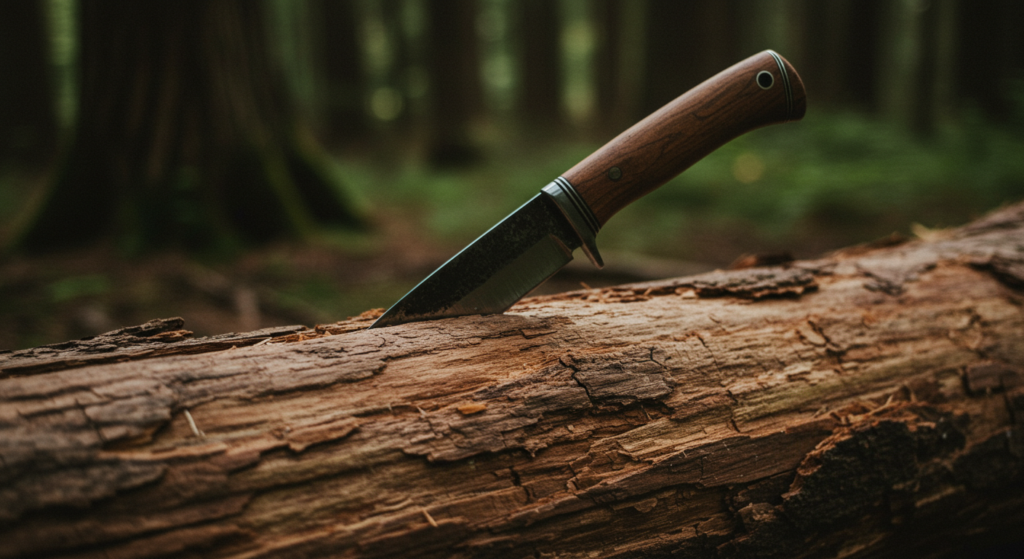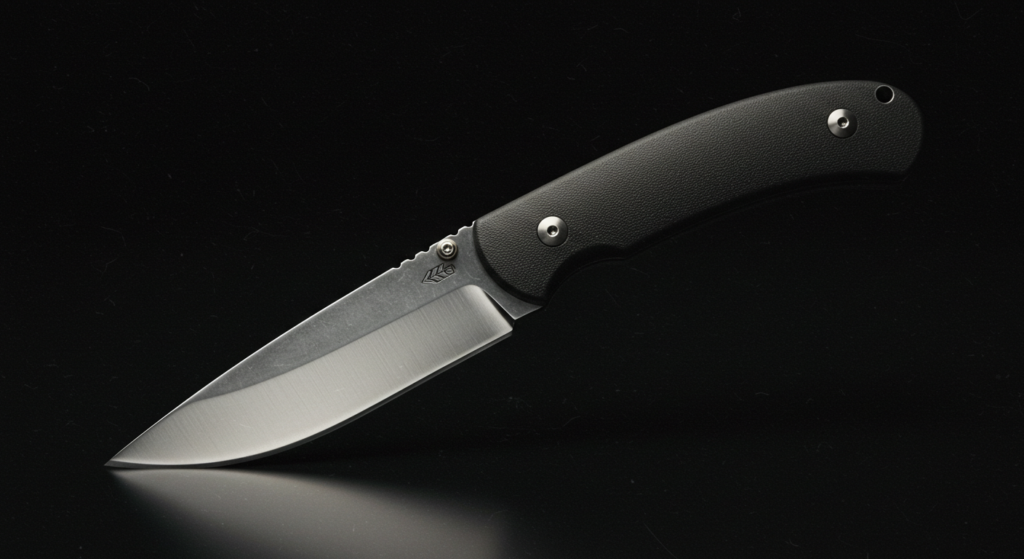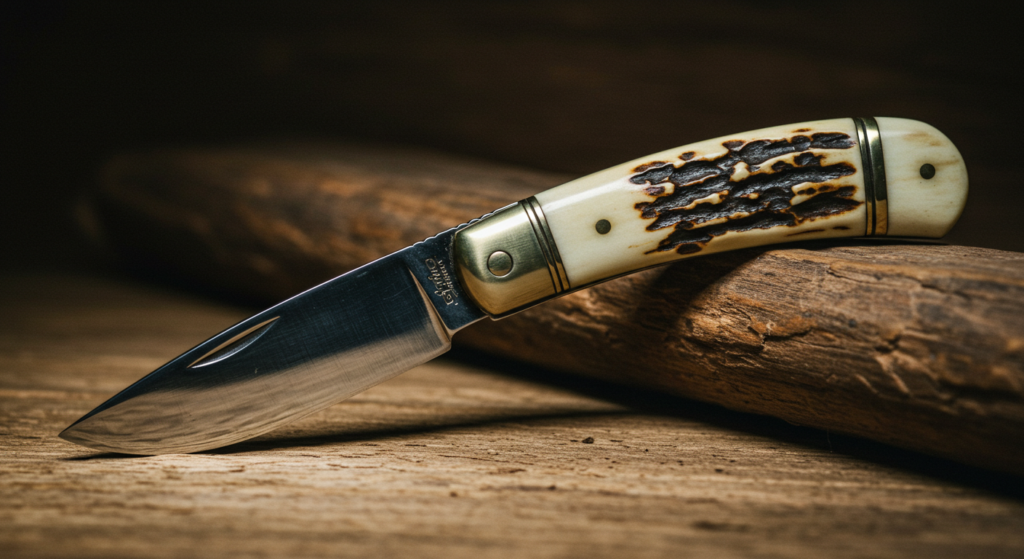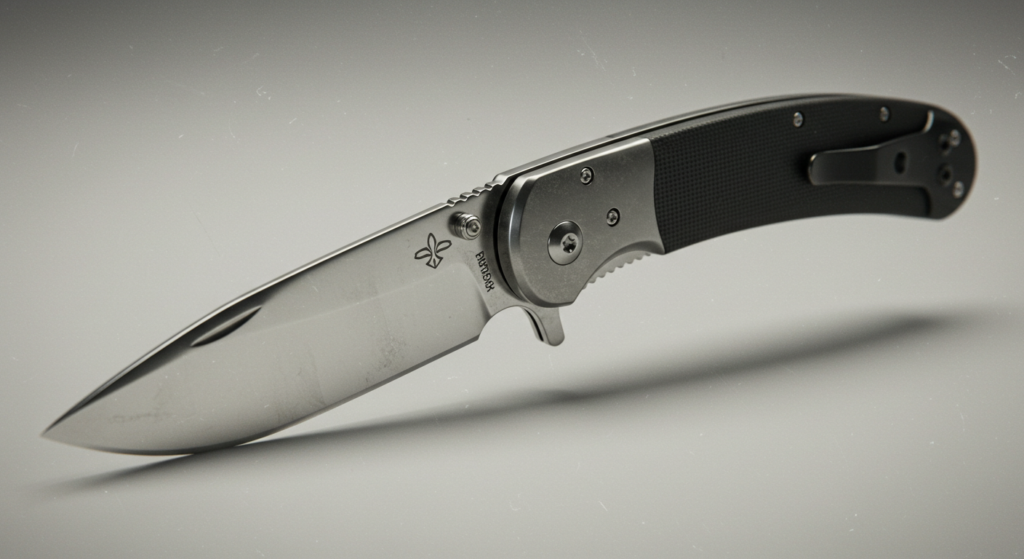The Only Pocket Knife Guide You’ll Ever Need
Choosing Your Ultimate Pocket Knife
There’s something timeless about a pocket knife. Whether it’s passed down through generations or freshly unboxed, this compact tool holds the power to slice, carve, and whittle its way into your daily life. For the outdoorsy types, it’s more than just a utility, it’s a survival companion, an eating utensil, and even a lifesaver when things go sideways in the wild. But with so many options out there, how do you pick the right one?
Finding the perfect pocket knife isn’t just about aesthetics or name brands. It’s about function, durability, and ensuring that the blade you choose suits your lifestyle. Whether you’re a weekend warrior, a seasoned backpacker, or just someone who appreciates a well-crafted tool, this guide will help you cut through the confusion and find the right pocket knife for your needs.
Fixed, Folding, or Multi-Tool?

Fixed-Blade: The No-Nonsense Workhorse
A fixed-blade knife means business. It doesn’t fold, doesn’t retract, and doesn’t hesitate when it comes to heavy-duty tasks. These knives are known for their strength and reliability, making them a staple for hunters, survivalists, and bushcraft enthusiasts. The full-tang construction (where the blade runs through the entire handle) ensures durability for tasks like batoning wood, cleaning fish, or building shelters. If you’re venturing deep into the backcountry and need a knife that won’t fail you, this is your pick.
- ESEE Pacaya – A robust utility knife featuring a 3-inch drop point blade made from CPM-3V tool steel, designed for rugged use.
- Morakniv Companion Heavy Duty – Known for its sturdy construction and sharp edge, this knife is lightweight and features an easy-to-grip rubberized handle.
- Benchmade Bushcrafter – A high-quality fixed blade knife suitable for outdoor activities, offering durability and reliability.
Folding Knife: Compact and Convenient
Folding knives are the go-to for everyday carry. The ability to tuck the blade safely inside the handle makes them pocket-friendly and easy to transport. Whether you’re peeling an apple on a hiking trail or cutting paracord in a pinch, a well-made folding knife is always at the ready. Popular designs range from sleek single-blade models to complex multi-tools packed with extras. If portability and ease of use are high on your list, a solid folding knife is your best bet.
- Knafs Lander 2 – A versatile folding knife praised for its reliability and performance.
- CIVIVI Yonder – A budget-friendly folding knife offering quality materials and performance.
- Petrified Fish Hourglass – A folding knife that offers excellent value with its design and functionality.
Multi-Tool: The Jack-of-All-Trades
Why settle for one function when you can have an arsenal of tools in your pocket? Multi-tools integrate pliers, screwdrivers, saws, bottle openers, and, of course, a trusty blade into one compact device. While they’re not as specialized as a dedicated knife, they’re invaluable for campers, DIYers, and anyone who loves having a solution for every problem. If versatility is your game, a multi-tool is your best adventure buddy.
- Leatherman Arc – A premium multi-tool featuring a MagnaCut blade and a comprehensive set of tools, known for its durability and functionality.
- Leatherman Skeletool – A lightweight and highly functional multi-tool, praised for its simplicity and ease of use.
- Victorinox Swiss Army One Hand Trekker – A versatile multi-tool with a one-hand opening blade, suitable for various tasks.
Blade Shapes and Their Uses

Clip Point: Precision and Control
If your knife needs to handle delicate cutting and intricate tasks, the clip-point blade is your best friend. The distinct clipped tip allows for precise control, making it perfect for detail work like skinning game or carving wood. It’s sharp, nimble, and built for finesse.
- Vosteed Mink– Features a full tang, three-inch clip point blade, ideal for everyday carry.
- Buck 110 Folding Hunter – A classic design known for its clip point blade and reliable performance.
- Spyderco Paramilitary 2 – Offers a versatile clip point blade suitable for various tasks.
Drop Point: Tough and Reliable
Drop-point blades are the backbone of hunting and survival knives. With a strong, slightly curved spine that tapers down toward the tip, they’re built for durability and power. Whether you’re dressing game, slicing through tough materials, or tackling campsite chores, the drop-point blade won’t let you down.
- Benchmade Bugout – Lightweight with a drop point blade, perfect for everyday carry.
- Knafs Lander 2 – Features a drop point blade and is praised for its versatility.
- Hogue Deka – Known for its clip point blade and high-quality materials.
Serrated Edge: Cut Through the Tough Stuff
A serrated blade may not be as versatile as a straight-edge knife, but when it comes to sawing through rope, fibrous materials, or even bread, nothing beats it. Many knives offer a combination blade with both a smooth and serrated edge, giving you the best of both worlds.
- Leatherman Wave+ – A multi-tool with a partially serrated blade, offering versatility.
- Spyderco Atlantic Salt – Features a fully serrated edge, ideal for marine environments.
- SOG Seal XR – A robust knife with a serrated edge, suitable for heavy-duty tasks.
Finding the Right Grip

Wood & Bone: Classic and Timeless
There’s something undeniably old-school about a wooden or bone handle. These materials offer a traditional feel and excellent grip in dry conditions. However, they do require extra maintenance to prevent cracking and warping, especially in humid environments.
- Case XX WR Trapper – A traditional slip joint knife with bone handles.
- Uncle Henry LB7 Bear Paw – Features classic wood grain handles.
- Old Timer Generational Middleman – A traditional slip joint knife with bone handles.
Synthetic Materials: Grip Meets Durability
Modern handle materials like G-10, Micarta, and FRN (fiberglass-reinforced nylon) provide superior grip, moisture resistance, and longevity. If you need a knife that can withstand rain, sweat, and extreme conditions, these high-tech materials are the way to go.
- Kershaw Federalist – A modern slip joint knife with synthetic handles.
- Benchmade Bugout – Lightweight with synthetic handles.
- Spyderco Tenacious – Features durable G-10 synthetic handles.
Metal: Lightweight but Slippery
Aluminum and titanium handles offer a sleek look and lightweight feel, but they tend to be slick, especially when wet. Some models incorporate textured patterns or rubber inlays to improve grip, but if you’re working in damp conditions, you may want to consider a different material.
- CRKT Facet – A sleek design with metal handles, suitable for dress carry.
- Gerber Gear Paraframe Mini – A fine edge small EDC folding knife.
- SOG PowerAccess Deluxe – A multi-tool with metal handles, providing a robust feel.
Blade Locking Mechanisms Explained

A locking mechanism keeps your knife from accidentally closing while in use, a crucial feature for safety and reliability. Here are the most common types:
Slipjoint
Common in Swiss Army knives, slipjoint knives rely on spring tension to hold the blade open but don’t actually lock it in place. While great for everyday light tasks, they’re not ideal for heavy-duty use.
- Kershaw Federalist – A modern slip joint knife with high-quality materials.
- Case Sod Buster – A traditional slip joint knife with a classic design.
- Old Timer Generational Middleman – A traditional slip joint knife with a classic design.
Liner Lock
One of the most popular locking systems, the liner lock engages a metal bar along the handle to keep the blade locked. A simple push of the bar releases the blade for folding. It’s reliable, one-handed friendly, and great for general use.
- Old Timer Trapper– Features a reliable liner lock mechanism.
- CIVIVI Mini Praxis – A budget-friendly option with a liner lock.
- Petrified Fish Hourglass – Offers excellent value with a liner lock design.
Lockback
A notch in the spine of the handle locks the blade in place until a release button or lever is pressed. This system provides a rock-solid hold, making it a favorite for outdoor and survival knives.
- Buck 110 Folding Hunter – A classic lock back knife known for its reliability.
- Spyderco Native 5 – Features a lock back mechanism with modern materials.
- Cold Steel Finn Wolf – A robust lock back knife suitable for outdoor tasks.
Budget vs. Performance – How Much Should You Spend?
A pocket knife’s price often reflects its materials, craftsmanship, and features. But you don’t have to break the bank to get a quality blade. Here’s a breakdown:
Budget-Friendly ($20-$50): Great for casual users who need a simple, reliable knife for light tasks.
- Opinel No. 8 Folding Knife – A classic design known for its simplicity and sharp carbon steel blade, ideal for everyday tasks.
- CIVIVI Mini Praxis – Offers quality materials and performance at an affordable price, making it a great value for budget-conscious users.
- Kershaw Cryo – A modern drop point knife that combines traditional design with contemporary materials, providing excellent value.
Mid-Range ($50-$100): Offers better materials, improved durability, and additional features like premium steel blades and ergonomic handles.
- Kershaw Blur – Known for its ergonomic design and high-quality steel, this knife offers exceptional performance for its price.
- LEATHERMAN Rebar -Multi-tool with all-locking tools, 100% stainless steel construction and removable wire/hard-wire cutters.
- Gerber Gear StrongArm – Full tang fixed blade knife features a 420HC steel blade with a plain edge, perfect for whatever the outdoors has in store.
High-End ($100+) Designed for serious enthusiasts, these knives boast top-tier steel, intricate craftsmanship, and lifetime warranties.
- Spyderco Para Military 2 – Features a 3.45-inch full flat-grind CPM S45VN stainless steel blade for exceptional edge retention.
- Benchmade Griptilian – A top choice with a perfectly balanced large, sharp blade, offering exceptional quality and performance.
- LEATHERMAN Signal – 19-in-1 Multi-tool, including pliers, wire cutters, knife, saw, hammer, can opener and more into a compact 4.5-inch size that weighs a mere 7.5 ounces.
Ultimately, the best knife is the one that fits your needs. A budget blade might be perfect for an occasional camper, while an investment piece might be worth it for a seasoned adventurer.
Why Your Knife Matters
A good pocket knife is more than just a tool—it’s a trusted companion. Whether you’re slicing fruit on a picnic, tackling unexpected challenges in the wild, or just feeling the weight of history in your palm, your knife is an extension of you. Choosing the right one ensures that, no matter what life throws your way, you’ll always be ready.
So, next time you’re gearing up for an adventure, don’t just grab any blade. Take the time to find one that fits your style, your needs, and your grip. A great knife isn’t just a purchase, it’s a lifelong investment in preparedness, craftsmanship, and self-reliance. Happy slicing!
